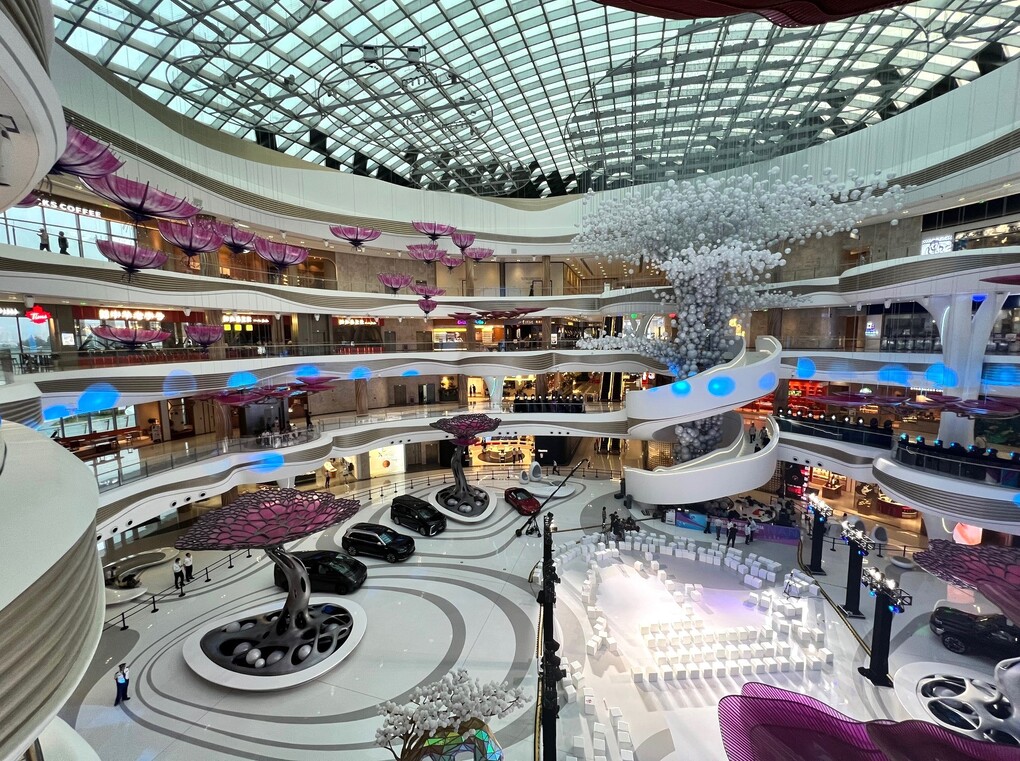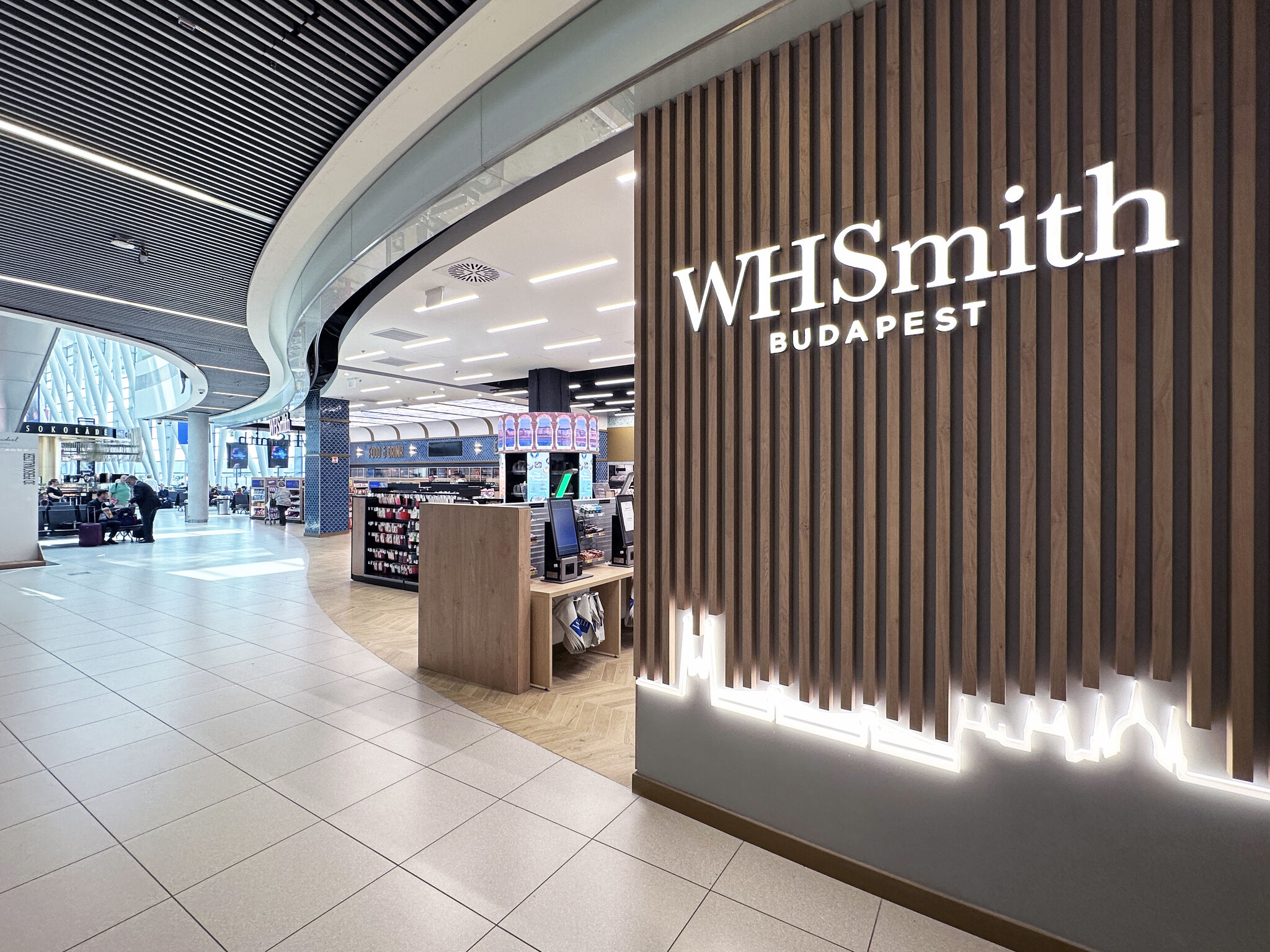“A legendary place with which Parisians still have an intimate and unfailing rapport”
“The most mystical of department stores.” “An artwork in its own right.” “The quintessence of eternal Paris.” In late 2019, Paris will witness the reincarnation of one of its most revered institutions, the famous La Samaritaine. And DFS, the world’s leading luxury retailer, is at the heart of the revival.
Last Friday DFS confirmed that it is to open its first department store in Paris, a 20,000sq m commercial linchpin of a thrillingly ambitious multi-purpose development.
“We’re creating something unheard of, never done before to this degree,” says DFS Chairman & CEO Philippe Schaus, speaking to The Moodie Davitt Report at the DFS office in Paris, which houses a giant model replica of the development.
La Samaritaine, a Parisian institution since its founding in 1870 by Ernest Cognacq and Marie-Louise Jaÿ, was acquired by luxury goods giant LVMH Moët Hennessy Louis Vuitton (LVMH) in 2001. Four years later the building was closed for safety reasons, sparking more than a decade of controversy over its proposed design and redevelopment. All the legal and regulatory challenges have now been overcome, setting the scene for what LVMH describes as La Samaritaine’s “renaissance” in the final quarter of 2019.

The new-look La Samaritaine embraces a cluster of old and new buildings spread over two blocks between the Quai du Louvre and the Rue de Rivoli, right next to the Seine river that flows like a bloodline through Paris. Besides the DFS store, the 70,000sq m development will include a 5-star, 72-room Cheval Blanc hotel; 96 social housing units; offices and a crèche.
DFS, the company jointly held by LVMH and Robert Miller (the company’s Co-Founder) will offer what it describes as “exceptional” collections from Parisian, French and international brands and artisans. The duty and tax paid range will include beauty and fragrances, fashion and accessories (including an extensive shoes offer), watches and jewellery, and food, wines and spirits. Eight restaurants, bars and cafes will complete the consumer experience.

“It’s a once-in-a-lifetime project,” says DFS Region President Europe & Middle East Eléonore de Boysson who is leading the project from her Paris base. LVMH says its architectural ambition is to restore and enhance a building and a heritage that is registered on France’s Inventaire Supplémentaire des Monuments Historiques. The restoration, in the hands of Tokyo architectural agency Sanaa, returns to the inspiration of two of La Samaritaine’s earlier architects, the Art Nouveau genius of Frantz Jourdain, and the brilliant Art Déco work of Henri Sauvage.
Some two years ahead of its opening, the development is a sprawling construction site, all steel, concrete, cable and wire, lit up by occasional thrilling flashes of the original beauty. To walk the site, as The Moodie Davitt Report and other travel retail media did on Friday, is to experience a hallowed past about to find new voice in a fusion of history and modernity that promises to be one of the French capital’s most iconic attractions.
After that tour, Martin Moodie spoke to Schaus and De Boysson about their aspirations for the project.
 Tell us about the combination of excitement, responsibility and challenge that you must feel with a project like this.
Tell us about the combination of excitement, responsibility and challenge that you must feel with a project like this.
Schaus: Well, the excitement is, of course, similar to the previous projects we did [T Fondaco dei Tedeschi by DFS in Venice and T Galleria by DFS, Angkor in Siem Reap, Cambodia]. It’s about the recreation or the creation of a new destination in the City of Lights [‘La Ville-Lumière’] for visitors to the city or those living in Paris.
The excitement comes from that gigantic task of creating something which will be an experience of its own, which will add to the pleasure of visiting the city and which will add to the network of the DFS collection of great locations and stores. It will be built on our existing relationships with travellers and, of course, we plan that it will be a commercial and financial success over the longer term for DFS.
“We have a responsibility, too, towards the city of Paris and its citizens in terms of doing the right thing with this beautiful building, creating a new landmark, creating a place of living that is accessible to everybody” – Philippe Schaus
The responsibility is multiple. There’s responsibility, of course, towards the shareholders of DFS – they are investing a lot of money into this project to make it a success. There is a responsibility towards our brand partners to create a new venue for them to present themselves to customers. We want this to be a store they will be particularly proud of.
We also have a big responsibility towards our travel industry partners – those who are going to bring customers to the store. We have a responsibility, too, towards the city of Paris and its citizens in terms of doing the right thing with this beautiful building, creating a new landmark, creating a place of living that is accessible to everybody. There is, of course, a shopping side. But there is also the cultural side and the food & beverage side of the project. And there is the social and environmental responsibility.
The early presentations of the project to brand partners and travel industry partners have seen a euphoric reaction. There is no doubt that we’ll get all the support we need from these partners. The challenge is the same one that we have found in other locations we’ve created – it’s creating a working organisation with a few hundred staff, with from day one the incredible high-level service DFS is reputed for. We were successful at achieving that in Venice. We need to achieve it here as well.
Then there is the commercial and financial challenge of a project like this, which is based on thorough investigation, analysis, planning, and its own business plan, which we aim at achieving or exceeding.
There is no place to hide is there? It’s as high a profile as it gets. There is the sheer history of the building, the controversy that has surrounded the redevelopment, and of course it’s in LVMH’s home city.
Schaus: Yes, but you know one of the key values of LVMH is that of innovation and risk-taking and always searching for excellence. That’s exactly how this project is positioned. These values are dear to our Chairman and CEO [Bernard Arnault] and they are dear to the DFS team.

What does it say internally about DFS that you have been chosen by LVMH to handle this project? La Samaritaine was a department store and, in part, will be again. And LVMH has chosen its travel retail arm to handle it. It could have opted for other choices, for example, Le Bon Marché Rive Gauche.
Schaus: What it says is clearly the belief that DFS more than any other entity within or outside the group has the capacity to transform, and to create destinations for visitors and travellers.
We have proven it in Venice where we have created a destination and a landmark of the city, a place where Venetians, too, go on a regular basis.
This location is situated on a shopping street which already offers everything a local Parisian would be looking for. What this building plays on is that it is at the epicenter of historic Paris, being a department store on the Seine and almost equidistant from the Eiffel Tower and Notre Dame, next to the Louvre. The site has incredible tourism potential, and the municipality and the Mayor have made tourism one of the key priorities for the city of Paris. This project is accompanying that vision.
Tell me about the tensions of taking an architectural monument, a wonder, on the one hand and creating a commercial enterprise within. How do you approach that challenge and balance that potential tension?
Schaus: Well, I think back to Venice, where we took a building of the early 16th century, which is an architectural landmark of the city. And we were able to combine a renovation of that incredible building with its commercial destination. And in Venice, as now in Paris, we brought the building back to its original purpose. Samaritaine was built as a department store. The Fondaco was built as a trading house.
“It requires a buying-in of the entire organisation. There’s no single department of DFS which will not be affected by this project.” – Philippe Schaus
What has been very sad for Parisians is to see this building empty for so many years. What we are doing now is bringing it back to life in a new, different, exciting, modern way. I think that’s what people will appreciate.
What’s involved in a project such as this in terms of resource? How do you go about a development on this scale from a project management perspective? It must be a monumental challenge.
Glory restored On 21 March 1870 Ernest Cognacq and Marie-Louise Jaÿ opened a “grand magasin de nouveautés ‘ (new fashion store) in a nondescript 48sq m area of the Café de la Samaritaine on the corner of Rue du Pont-Neuf and Rue de la Monnaie. The shop was named after the pump used to supply water to the nearby Louvre from 1608 to 1813. La Samaritaine pump was embossed with a sculpture of Samaritaine – a woman from Samaria in Palestine reputed to have given water to Jesus on his way to the crucifixion. Over subsequent decades Ernest Cognacq took over the original building and four more adjacent sites, creating some 80,000sq m of retail space. In 1905 he commissioned the architect Frantz Jourdain to construct a new building at the corner of Rue du Pont-Neuf and Rue de la Monnaie, which was completed in 1910. Commonly known as the Jourdain Building, it is considered a magnificent example of Art Nouveau. The architect Francis Gourdin built a second store between 1904 and 1907. This was enlarged by Henri Sauvage between 1922 and 1928, who also designed a magnificent Art Deco façade, framed with woodwork painted in bronze and adorned with balconies and canopies. All of those glories, first faded and then hidden, will soon be restored and open to the public gaze |
First, I would say it requires a buying-in of the entire organisation. There’s no single department of DFS which will not be affected by this project. I think one of our key assets is this capability of focusing all our resources on one project – and in a very collaborative and vision-driven sense making it happen. We have proven it on previous projects. So, it’s a huge involvement of the entire DFS organisation.
Secondly, it requires building up a local organisation in the location. So, Eleonore has that mission. A few members have already joined. We just had a three-day workshop in which we determined what the organization will look like when we open; what it will look like a year before we open; and what it will look like a year and a half before we open. This now has to be rolled out and that’s an enormous amount of work.
“This is being rolled out like a military exercise for which we have to really address all aspects of the organisation.” – Philippe Schaus
In Paris, we have the benefits of quite extensive LVMH infrastructure in terms of human resources, finance, legal etc., which we’re able to leverage. In that sense, this project is to some degree easier than what we did in some other locations, like Cambodia, where we had no local support.
But you’re right that this is a very ambitious undertaking. This is being rolled out like a military exercise for which we have to really address all aspects of the organisation. It’s not just about having the people; it’s having them trained, having them understanding the product. It’s about adapting the tools. We have IT tools and merchandising tools which need to be adapted. So, there’s a lot of things which need to happen for this to work.
The philosophy here is very clearly that there are no two similar DFS stores. This is the Parisian store. The spirit here is the Parisian spirit. So, a lot of the philosophy and details of the project will have to be invented here in Paris by the team we build up while being supported by the global DFS team. We want to create a portfolio of great destinations in great cities – destinations within a destination. And we really want each one of those to have its own personality while at the same time leveraging on the DFS global capacities.
De Boysson: One of the keys of future DFS success is its ability to adapt and to have stores that are relevant in the local context. That localisation will be more and more important for the travellers, because when they travel from one city to another they don’t want to have the same experience.
The basis of the Fondaco was that if people are going to travel to Venice they want to have a Venetian experience. So, we looked at all the different elements of how to give them a Venetian experience that they could not have anywhere else.
The same applies here: we are going to give them a very French and Parisian experience, because that’s what they’re waiting for. We are seeing a much more sophisticated and educated Chinese and other Asian consumer. We leverage the global strengths of DFS and make the stores relevant in the local context.
“We probably now need to talk about both ‘Instagramable’ and ‘WeChatable’ experiences” – Philippe Schaus
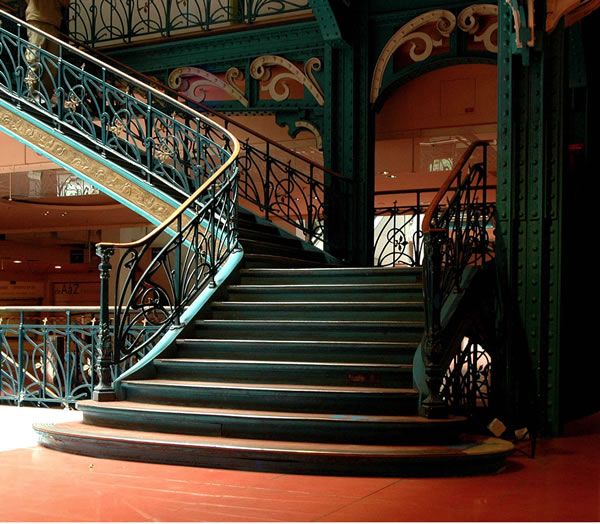
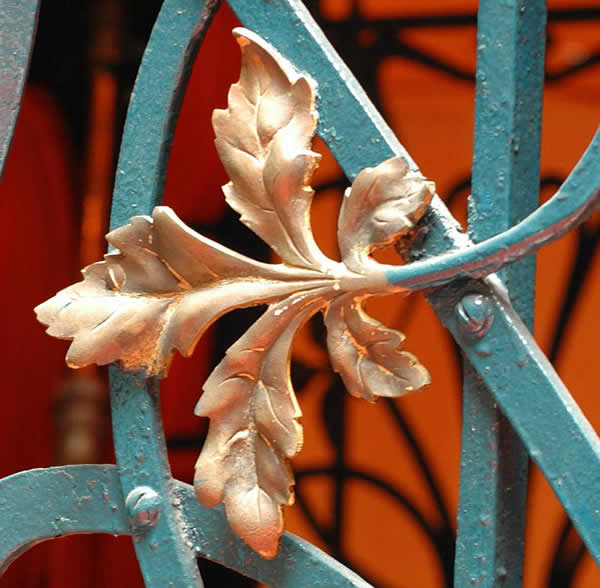 Schaus: Shopping cannot just be ‘shopping while travelling’. It cannot be a generic experience. It has to be a localised experience.
Schaus: Shopping cannot just be ‘shopping while travelling’. It cannot be a generic experience. It has to be a localised experience.
We have talked about ‘Instagramable’ experiences. We probably now need to talk about both ‘Instagramable’ and ‘WeChatable’ experiences. It is so important that not only do I have a great experience but that I can share this with my friends. One of the key things we’ve been looking at when we try to understand how successful we are in Venice is look at our ratings on TripAdvisor. Are we rated well? What are the comments we’ve received? We are part of the tourism experience so we look at it regularly.
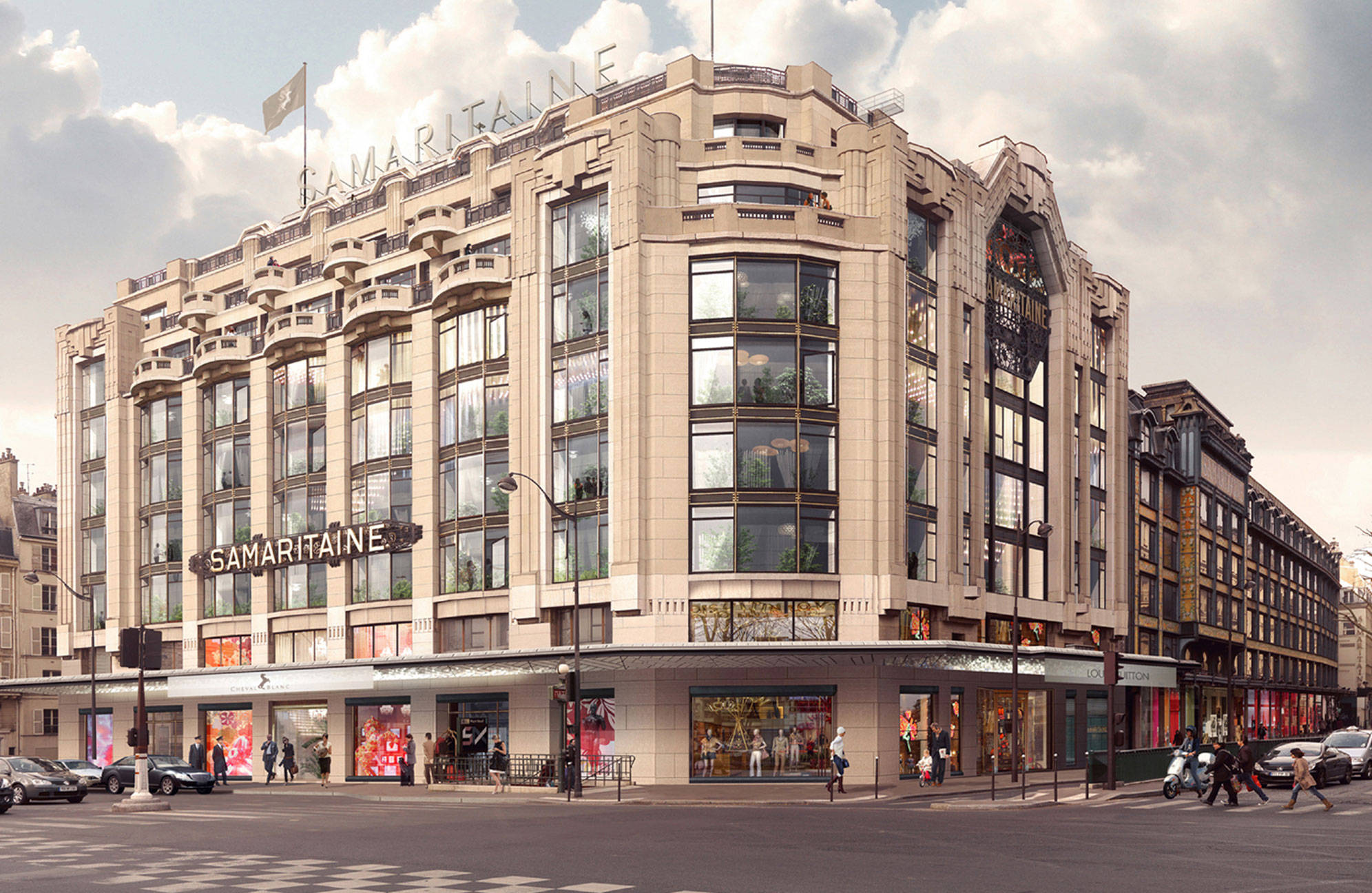
De Boysson: We have been creating an icon that any tourist can’t not go and see in Venice. And that’s what we want to build here as well. That’s why the architecture and the building and its location are all so important.
Let’s focus on your clientele here. You will be able to sell to locals but are the Chinese, your core nationality, pivotal here?
Schaus: The Asian traveller, is, yes. Just as they are to pivotal to the success of many of the major retailers in Paris today. No difference.

But you would see yourselves as very different to, say, a Galeries Lafayette tourist shopping proposition?
Schaus: Yes, it will be very different in several ways. It will be different because of the location. We are not on hectic boulevards where buses are stuck in traffic. We are on the Seine River, which is really the artery of the city. That’s an important aspect
De Boysson: And we are in a district where it will be very, very nice to wander and to visit.
“To have the opportunity to work on two iconic buildings that are so important to Parisians and Venetians and the cities of Paris and Venice makes me feel very lucky” – Eleonore De Boysson
Schaus: The second thing is that this is a human-scale store. It’s twenty thousand square meters. It’s a space you can entirely discover in a couple of hours. This is not the scale of a large Parisian department store. Which means also that we have to focus on some key categories. We are not offering all the categories a local shopper will find in his local department store. But we are offering all the key categories a visitor will be looking for in a city like Paris and want to bring home. So, there is clear focus and concentration and a human scale to what we are doing.
De Boysson: Of course, we’ll have the emblematic iconic brands. But we will also have in the mix – maybe 20-30 percent – brands that are very French, very Parisian, that are going to give clients some sense of surprise and discovery. They will have the sense of finding a curated approach made for them by DFS so that they can discover what Paris has the best to offer.
So, as in Venice, things that I would not find in any other DFS store?
De Boysson: Yes, for sure.
Schaus: We will have a dedicated buying team just for these categories.
How will you manage the food and beverage?
De Boysson: We’ll lease that to operators. We don’t intend to operate it ourselves. We, of course, will define the concept and then we’re looking for operators. We’ll have eight different restaurants or small cafés and so on. We really believe it’s part of the experience and it will be a key element of differentiation from the other department stores. It’s also a key to the store becoming a destination for the Parisians as well as a service for travellers that are shopping in the store.
You’ve got this cultural triangle, if you like, of stores in Cambodia, Venice and now Paris. Three magnificent rebirths. Philippe, do you see this cultural wave as very much different from the rest of the DFS business?
Schaus: I see them as a further iteration of the previous DFS concepts. You will see some elements here of what we have already done in places such as Hawaii or in Auckland, where we’re also in a historical building.
This is taking it to the next level, this whole idea of a destination. On the other hand, these stores are also testing grounds. In meetings over the last few days we have asked, “What does La Samaritaine bring to DFS?” It brings a testing ground, a learning ground, which we will feed into other stores. For example, in Venice we launched a shoe floor and a lot of the learnings have been feeding some of the shoe ideas we have in Macau.
“We’ll always be able to look at it and say, “Well, we did this.” – Philippe Schaus
Here we have several buyers who are buying local brands. If we find out that one or other of these brands has a particularly high appeal with our Asian or American travellers, then we will definitely consider introducing them in American airports or in an Asian Galleria. It’s an experimentation ground. It should not just feed that particular location, it should feed our global network. We constantly need to refresh our offer, find new ideas, excite our customers, be it at downtown stores or airport stores.
For one retailer to be running three such ambitious projects in three very different locations is remarkable. So, I want to close with a personal question for you both. How do you sum up the personal challenge involved with this kind of perhaps career-defining project?
De Boysson: I feel very honoured. It’s a once-in-a-lifetime project. To have the opportunity to work on two iconic buildings that are so important to Parisians and Venetians and the cities of Paris and Venice makes me feel very lucky.
Schaus: This is going to make my career or ruin my career! (Laughs) To me it’s all about the human dimension. Just being involved in a project like this, being able to drive it and contribute to transforming key travel destinations [Venice and Paris] and giving them a different aspect and different character is something very fulfilling.
I mean, you leave an imprint. One day everything will move on… but we’ll always be able to look at it and say, “Well, we did this.”
De Boysson: It’s very material. It’s very tangible.
Schaus: And it’s for eternity. Well at least for the next hundred years. So, it’s very nice.
[dvgallery id=”173590″ vertical=”no”]
Source of Picture Gallery: http://www.lasamaritaine.com
On trouve tout à la Samaritaine ‘Zone d’exclusion: Demolition en cours’ (Exclusion zone: Demolition in progress). The warning sign leaves no room for misinterpretation. As I and fellow members of the travel retail media begin a tour of La Samaritaine, it is quickly apparent that we are on a giant construction site. Or, to be more accurate given the multiple buildings involved, a series of construction sites. We’re all in hard hats, workers’ boots, safety glasses and gloves (due to the amount of lead on the site) as we make our way around this vast, dusty, noisy and yet wondrous edifice that in not much over two years will be a Parisian institution reborn.
We’re led up dank stairways and along walkways that ooze history but in their current state only hint at the grandeur that is to come. Every now and again, though, glimpses of the glory that awaits become apparent. Magnificent (and original) giant wrought iron beams repainted in their original soft grey palette; balustrades that conjure up a bygone time and indeed were created in one. Original staircases that felt the step of 19th century feet now awaiting their final makeover before 21st century Parisians and international visitors alike discover this new ‘lieu de vivre’ in the City of Lights. 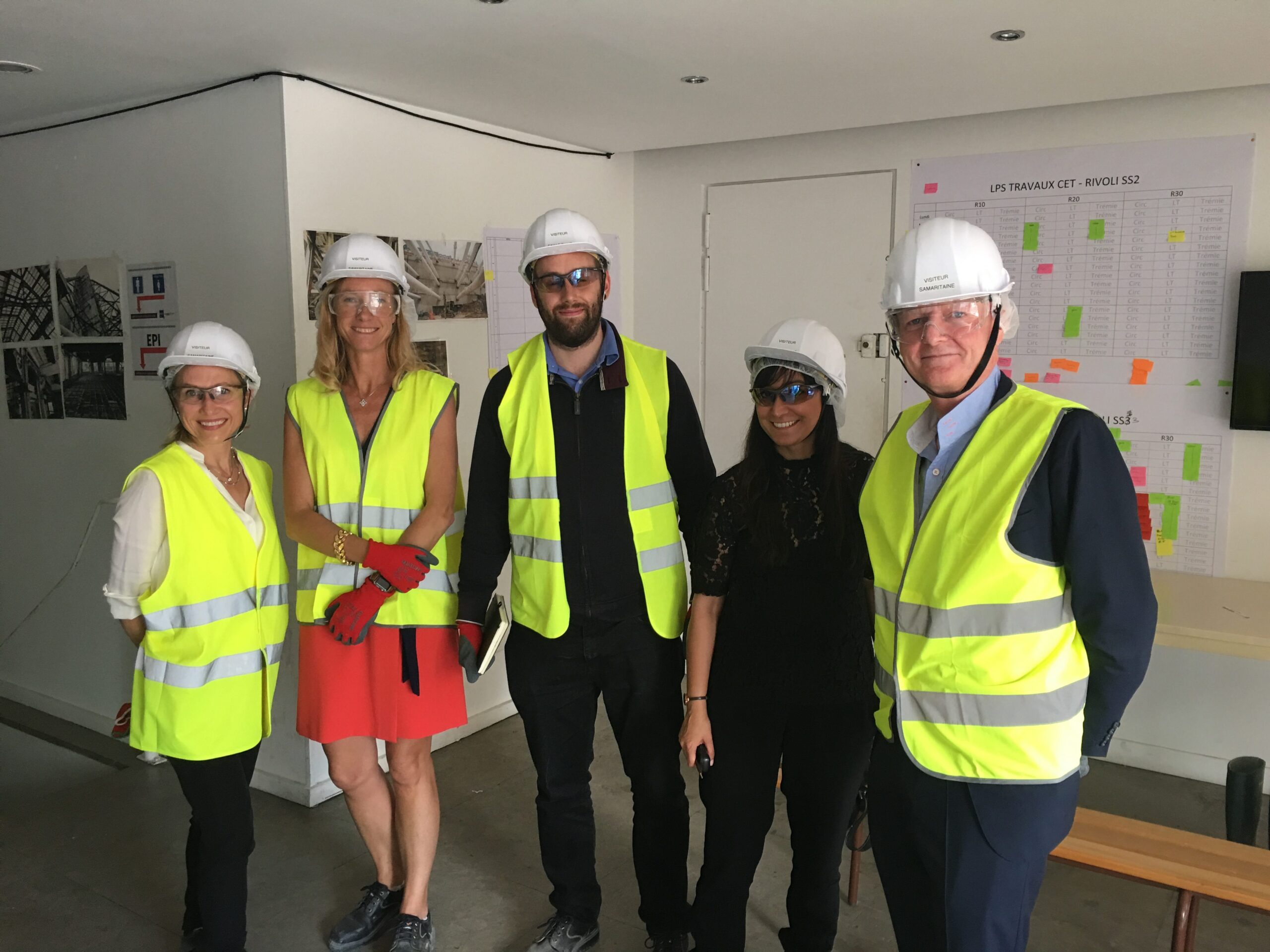 Much of La Samaritaine’s most thrilling beauty is still under cover; its stunning frescos for example, soon to be unveiled in all their original artistry. And within this place of wonder, a department store, created and run by DFS, will give modern-day voice to the original concept formulated by Ernest Cognacq and his wife Marie-Louise Jaÿ in 1870. “It’s really about both tradition and modernity,” says DFS Region President Europe & Middle East Eleonore De Boysson, speaking of La Samaritaine’s €500 million restoration. “There’s the tension between the romantic, charming, arty, Louvre image and the hectic pace of the streets of this district of Paris.” La Samaritaine, straddling the blocks that link Rue de Rivoli to Quai du Louvre, is ideally positioned to attract the tourists that will be DFS’s commercial lifeblood here. It lies between the city’s number one and number three visitor attractions, respectively, Notre Dame and the Louvre (number two is Montmartre) “The whole area is undergoing a revival, it really will be the trendy district of Paris,” Ms De Boysson comments. As we reach the third floor of the exquisite Hall Jourdain Sous Verrière, one starts to sense the magic that is about to unfold (see mock-up below) once the frescos are uncovered, the balustrades retouched and the full glory of the iron work revealed.
[Picture source: LVMH] Light floods into this giant atrium space from above, just as it will when all the glass of the magnificent verrière is in place and shoppers are making their way around the floor. From where we stand, one gazes across and down towards the courtyard and up into the blue of a Parisian summer’s sky. “There are a lot of windows,” says Ms De Boysson. “With all our design, the place will be full of light.” La Samaritaine’s renovation has been necessarily painstaking, as 80% of the buildings (the Art Nouveau and Art Deco features and structures) are classified historical monuments. Each step of the work is monitored rigorously as stonemasons, blacksmiths, sculptors and ceramists restore one of France’s great landmarks to its former glory. But’s it not just about history revisited. An ultra-modern facility with a wavy glass facade is replacing the former buildings on Rue de Rivoli. It is there, in fact, that we end our tour, walking around at rooftop level where the extensive food & beverage offer will be sited. From here one gets an astonishing 360° view of Paris, great landmarks, such as the Basilica of the Sacré-Cœur on Montmartre glistening in the afternoon heat. LVMH says: “All the historic building’s facades have their luster back after the restoration of the dilapidated parts. In the Rue de l’Arbre-Sec, Frantz Jourdain’s multi-colored enameled tiles, currently hidden beneath a stone-colored wash, will be renovated. “With its glass roof, which has been rebuilt following the original 1905 structure, its monumental staircase and its renovated Art Nouveau decor, the Jourdain Hall will be restored to its former glory. In the Rivoli section, the seventeenth century apartment blocks in the Rue de l’Arbre-Sec will be refurbished to provide social housing.” The Renant family, which took over the store after World War II, coined the phrase ‘On trouve tout à la Samaritaine (One can find everything at La Samaritaine). And as this still ghostly shell is restored to – and perhaps beyond – the majesty of its past, you can add history, romance and a whole lot of nostalgia to what will be on offer. |











